- Home
- Jackie French
The Animal Stars Collection Page 12
The Animal Stars Collection Read online
Page 12
Another cry inside. The old woman could be heard speaking softly, encouragingly.
And then another wail.
‘Two sons! Twins! Heh! What did I tell you? It was a good thing you had me here.’
The man jumped to his feet. ‘Kyria, may I…?’
‘Yes, yes, you may see your sons.’ He disappeared into the house, and the donkey heard the old woman’s scolding start again. ‘No, do not unwrap them, man! Do you want their bones to be crooked all their lives? Do you want them to take a chill? Heh! Men!’
The donkey dozed.
The sun was almost rising when the woman came out again. She was even older than she’d seemed last night—her shoulders bent, her stomach high in her black dress.
‘Well!’ The old voice was tired but impatient. ‘Help me up onto my donkey.’
‘Your donkey! But Kyria Calliope, it was me who caught him—’
‘Because you were with me! If you had never come to get me you would have no donkey.’
‘But, Kyria—’
‘Heh! You have two fine sons now. Two! And who do you have to thank for that?’
‘You, Kyria. But—’
‘Do you think it right, Creon, that the midwife should stumble through the night, with no good donkey to help her poor old bones?’
‘No, Kyria, but—’
‘Think of the sons who might not be born if I cannot get there in time. All because a man would not let me take my donkey.’
The young man sighed. ‘Let me help you up, Kyria.’
‘Thank you.’ The old voice was gracious now.
The woman clambered onto the donkey’s back again. She smelt of herbs, the ones that grew up in the hills, and of something else as well.
Happiness. How long had it been since the donkey had smelt a human scent like that? Not death, but life.
The woman slapped him gently on his neck. It wasn’t the right signal to tell him to walk, but the donkey understood it, and the tap of her fingers to tell him which way to go, too.
‘He is a good donkey. No, you needn’t come with me, Creon.’
‘But you don’t know how to ride a donkey—’
‘You think I cannot manage it? We understand each other, me and the donkey.’ The woman patted the donkey’s neck. ‘Stay with your sons, Creon. Tend to your wife. Even a man can be useful when there’s a baby.’
‘Yes, Kyria Calliope.’
‘But you may bring my donkey some of your straw later, when you bring the dried figs for me, and the leg of goat.’
‘Yes, Kyria Calliope.’
The sun rose as they plodded back together, the woman and the donkey, onto the muddy track, then up to the small house by the stream.
CHAPTER 38
The Donkey
Lemnos Island, Easter 1937
There was a lot to remember when you were a donkey, especially now, when you were old, and your bones ached when the wind was chilly.
The donkey stood beneath the fig tree. The children had dressed him in a garland of flowers this morning. It was made of the bright wildflowers that grew among the wheat. It had taken him a while to work out how to reach it. Now he chewed happily on the last of the flowers.
The humans might exclaim when they saw that he had eaten his garland, just like they’d laughed the time he’d eaten that man’s straw hat. Humans made a lot of noise. But little of it mattered.
No one spoke harshly to Kyria Calliope’s donkey. The Kyria still carried her midwife’s bundle from house to house, though she was even more bent—and skinnier too, just like her donkey. If he were old, then Kyria Calliope was even older. But still men ran to find them in the night, then sat waiting on the doorstep while women cried in triumph, and there was the smell of life, not death, coming through the darkness.
Now the donkey waited again.
He had just chewed the last flower when the Kyria stepped out of the house and peered down at the baby in the woman’s arms. She spat three times in its face for luck. ‘He will do well. Yes, very well. Now help me up.’
The Kyria still had no use for reins. She grasped the donkey’s mane, as she always did, and patted his neck to tell him where to go. Yes, he and the Kyria understood each other.
He began to plod—slowly, because the morning light was soft and the wheatfields green with spring, and spring was to be enjoyed. No, the Kyria would not like him to hurry. She weighed so little, the Kyria. Nor did she mind if he stopped to reach up for a tasty branch, or down for a nice mouthful of new grass, not when they were on their way back home.
There was a wall at home to shelter him from the winds, and straw. Kyria Calliope had made it clear she did not like her donkey to go cold or hungry.
Soon the Kyria would sit on her doorstep and watch while her daughter-in-law ground the wheat. And the donkey would stand by his warm wall and munch and remember, savouring the memories like the taste of the spring flowers. The taste of hay, the houses where children patted him and women brought him lumps of bread, and the days when he had carried the wounded. For even though they had been frightening days, with noise and yelling, there were good things to remember from then too: the Man with Kind Hands and the man called Henderson and how the men he’d carried had patted him, the first gratitude he had ever known.
The donkey blew thoughtfully at a tuft of grass, then stopped to take a mouthful, while the Kyria sat patiently on his back enjoying the sunlight. There was much to remember, when you were a donkey. And most of it was good.
Author’s Note
The story of Simpson and his donkey
How did an Englishman leading a Greek donkey in a Turkish gully become an Australian legend?
Most of us think we know the legend of the man and the donkey who helped the wounded at Gallipoli. But very little of that legend is what it seems. And whole books have been written about the man, but very little about the donkey.
This is a book that is based as much on folklore and unreliable memories as it is on history. Both the end and the beginning of it are fiction—a story that I have made up. But even the middle bits, which stick closely to things written about ‘Simpson’ and his donkey by people who were there, may not be accurate. That said, I’ve used as much research as possible—and some commonsense—to sort the likely parts of the story from the unlikely.
How many men and donkeys carried the wounded? One man? Two? Three or four? There were at least two men—‘Simpson’ and Henderson—but several accounts give hints there may have been more.
Why were the donkeys there? Was there one donkey? Two or three or more? How many weeks or months did the donkey or donkeys carry the wounded? How many men were saved? By whom? Did at least some men think they were saved by Simpson when their rescuer was Richard Henderson or one of the other men?
We do not know.
Even the picture often shown of ‘Simpson and his donkey’ is quite possibly the photo of the New Zealander Private Henderson, who also used a donkey to help the wounded.
So much of what we think we know of Simpson and his donkey isn’t true. And there is so much more we can’t be sure of.
Historical detective stories
Writing history is a bit like reading a detective story—you have to add up the clues to find out what is most likely to have happened.
No one writes history as it’s happening—they are too busy living it. Which means that when you want to write about the past you have to look for clues in what was being written at the time—diaries, letters, newspaper stories…
But often none of these gives the whole story. Sometimes they contradict each other. And at other times you can be pretty sure the writer has got it wrong, or is even lying.
This is especially true in wartime. I don’t think any letter to a dead soldier’s family has ever told this kind of truth: ‘He died in agony, screaming for so long we were afraid the enemy would find us.’ The official account we have of Simpson’s death says that he died instantly. But even that might have been a
fiction, to lessen the pain for his mother and sister.
The story of Simpson and his donkey is one of those that has to be put together from a whole patchwork of different people’s accounts.
It isn’t easy.
War is chaotic. Gallipoli was more chaotic than most. Many official reports weren’t written till after the campaign—often by women volunteers sitting by the beds of wounded soldiers invalided back to England. Memories were hazy from pain or exhaustion. So many accounts of Gallipoli are contradictory, and there will probably always be large gaps in our knowledge of what happened.
The sudden fame of ‘Simpson’ made finding the truth harder too.
Even at Gallipoli the man and the donkey—or donkeys—became a legend as they wandered among the bullets in Shrapnel Gully. Soon, as war correspondent and later military historian CEW (Charles) Bean’s dispatches about Simpson reached Australia, he became a public hero. Everyone claimed that they had known him and his donkey, or donkeys.
The result was a mass of conflicting stories—there was one donkey; no, four donkeys. The donkey was a wild one; no, it had been stolen from the Turks or brought with the mules to carry water, or even to spread disease beyond the Turkish lines.
Many men claimed to have been rescued by Simpson—and perhaps they had been, though if you look at the dates you realise that some men thought they’d been rescued by Simpson days or weeks after his death. But there were many other stretcher-bearers, and at least two other men—perhaps more—rescuing wounded men with the help of donkeys. We can’t be sure how many men Simpson rescued, or even how many donkeys he had. He certainly called at least one donkey by different names during one trip down to Anzac Cove, but he had at least two donkeys, as one was killed. Simpson himself was even known by various nicknames: Murphy, Simmo…
In fact his name wasn’t even Simpson.
The one name by which ‘Simpson of Gallipoli’ was never known on that battlefield seems to have been his real one—Jack Kirkpatrick.
Apart from the beginning and ending of this book, I have departed from official records of Gallipoli only once. Some accounts say that Simpson found his donkey on the night of 25 April and started carrying the wounded on 26 April. But that first night was spent unloading equipment, and then preparing to evacuate. It wasn’t till the next morning that they were told they were staying, and the first lot of ambulance bearers were ordered to go up what became known as Shrapnel Gully (later Shrapnel Valley) to bring back wounded. As every account has Simpson finding the donkey in the gully, I have assumed that he actually found it on the night of 26 April, the second night after they landed, not the first. No official note was taken of Simpson and his donkey for some days and, by then, everyone would simply have felt ‘he’d had it right from the start’. As, in fact, he did—the start of the 3rd Ambulance Brigade’s forays up Shrapnel Gully and into Monash Valley beyond.
I have also changed the words that some men remembered him saying. The more recent, memory-based accounts say that Simpson used the word ‘digger’ or ‘dig’: e.g. ‘How you going, dig?’ But the word ‘digger’ doesn’t seem to have been used during World War I until 1916. I suspect that the men put what Simpson said into their own words and, by the time they got around to writing down what happened, ‘digger’ was widely used, and they assumed he’d used the word.
Similarly, no one can be sure what happened to the donkey after the troops were evacuated from Gallipoli. He was almost certainly taken by the evacuating troops back to Lemnos. Bean states that after Simpson died the donkey became the pet of the 6th Mountain Battery Indians, who took him with them when they retreated back to Lemnos. So it is just possible the donkey may have ended up in India. But I don’t think this is likely. Donkeys live for up to fifty years, and this donkey was as famous as Simpson. If he had still been in military service I am sure that the news would have spread.
It’s more likely that the men of the 6th Mountain Battery Indians did take the donkey back to Lemnos, but that he vanished while they were on the island. According to the commanding officer of the 21st Kohat Indian Mountain Battery, Lt Col AC Fergusson DSO, he and his men treasured the donkey and evacuated him safely at the end so they could present him to Australia, but he was stolen from their mule lines at Moudros.
So perhaps a thief took the donkey back on the island he came from. But somehow I don’t think so. Why would anyone steal a small and rather ratty-looking donkey when there were lots of big strong mules to take instead? A mule is much more valuable than a donkey. I think it is more likely that the donkey smelt the scents of home and got free himself. He may have been scrawny and humble-looking, but he had already survived a lot.
He wouldn’t have been free for long, though—even a donkey was too valuable to be left wandering about. His final home with the island’s midwife is entirely my own invention. I hope I haven’t contributed to the many fictions that have been written about Simpson and his donkey: fictions which have been taken by later writers as fact.
The chapter about picking up the soldier who shot himself in the foot is also an invention, though based on numerous similar incidents, as are the first chapters about the donkey’s life on Lemnos. And the chapters from the point of view of the Turkish sniper are also invention, but again the fiction has been inspired by what is known to have happened.
So many accounts say that ‘Simpson’ didn’t duck and weave the way the other men at Gallipoli did, that he strode through the gunfire and the shelling, singing or whistling as he went. He and his donkey were a large and very easy target for a sniper and we know there were Turkish snipers looking down at them in Shrapnel Gully.
But Simpson and his donkey, with their red crosses on their white bands, were also very obviously caring for the wounded. So I have assumed that one Turkish sniper, at least, deliberately didn’t shoot the man and donkey, even though they were the enemy who had invaded his country.
And then came the terrible night when the Turks tried to push the Allies off the Gallipoli Peninsula. They failed, with the most extraordinary losses. I think it is no coincidence that Simpson was shot the day after that dreadful night, when shock and rage and grief took over from compassion.
All the other chapters are based on the many accounts of the men who were there, accounts written in letters, diaries, official post-war documents, or the words of CEW Bean, whose dispatches formed the basis for the first book written about Gallipoli.
There were many, many heroes at Gallipoli, at least three of whom worked with donkeys, including Private Richard Henderson of New Zealand. Perhaps we can let the name ‘Jack Simpson’ stand for every one of those heroic stretcher-bearers in that stupidest of wars.
They were there. They did their best. That is what matters.
The man they called Jack Simpson
John Simpson Kirkpatrick was born on 6 July 1892, at South Shields near Newcastle-on-Tyne in England. His father was a seaman but had a serious accident in 1902 that left him unable to work. Young Jack, who was twelve at the time, took over supporting the family, doing jobs like delivering bread, while his mother took in a lodger—a paying guest—to help with expenses. Jack also worked as a donkey-lad, leading donkeys at Murphy’s Fair, which came to South Shields near Newcastle-on-Tyne twice a year. The rides were a penny each, and Jack would have been paid about sixpence a week. Jack’s father died in 1909, when Jack was seventeen, and two days later Jack sailed from Tyne on the SS Heighington—part of the British ‘merchant marines’, but with much the same disciplines and regulations as the navy.
On 12 February 1910, Jack joined the crew of the SS Yedda as a stoker—someone who shovels coal or coke into a furnace to power the steamship’s engines—and sailed for Newcastle, Australia.
As soon as he was in Australia, Jack ‘jumped ship’—in other words, he became an illegal immigrant. In those days, though, any British citizen could come freely to Australia, so his only really illegal act was leaving the ship and the merchant marines without giving pr
oper notice.
Jack wandered around the country, doing many different jobs: cutting sugar cane, droving cattle, coal mining, working on ships going up and down the coast, and mining for gold. He was also a dedicated trade unionist, fiercely defending the rights of working people in his letters home to his mother and sister, Annie, to whom he sent most of his wages.
As soon as war was declared in August 1914 Jack ‘jumped ship’ again—left the ship he was working on without notice—this time in Fremantle, Western Australia. Three weeks after war had been declared he enlisted in the Australian army in Perth under the name of Simpson, possibly in case he’d been listed as a deserter from the merchant marines and would therefore not be accepted into the army under his real name.
Jack was strong and fit—his army records say he had a fair complexion, brown hair, blue eyes, and was 5 feet 8 inches (almost 173 cm) tall, 12 stone (around 76 kg) in weight and of solid build. He was assigned to the Field Ambulance as a stretcher-bearer.
In his letters home Jack made it clear that his main reason for enlisting was to get a free trip home to England to see his mother and sister—at the start of the war most people thought that the Australian army recruits would be sent to England first, for basic training. But he also wanted to ‘fight the Hun’, or Germans. In one letter, annoyed at a delayed departure, he said that he wished he’d found another way to get home. But he also said that as soon as he did get home he would enlist in England. There was no question that he didn’t want to fight.
But England didn’t have the resources to train so many men from overseas, so Jack trained with the rest of the unit in Western Australia and then the first ships of the combined Australian/New Zealand force—the ANZACs—were sent to Egypt.
Jack was never to see his home or family again.
Eight months after he enlisted, at 5 am on 25 April 1915, Jack landed at Anzac Cove, Gallipoli, a stretcher-bearer with C section, 3rd Field Ambulance, 1st Australian Division, Australian Imperial Force.

 Christmas Lilies
Christmas Lilies The Lily in the Snow
The Lily in the Snow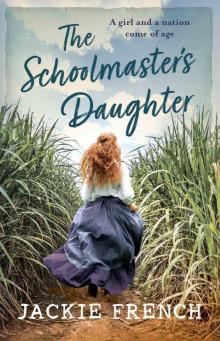 The Schoolmaster's Daughter
The Schoolmaster's Daughter Christmas in Paris
Christmas in Paris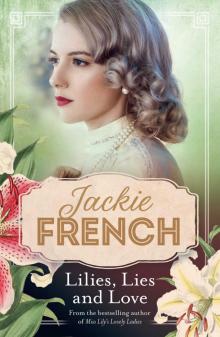 Lilies, Lies and Love
Lilies, Lies and Love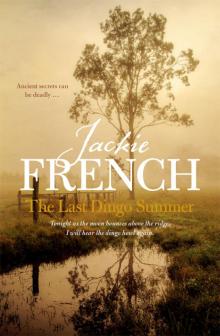 The Last Dingo Summer
The Last Dingo Summer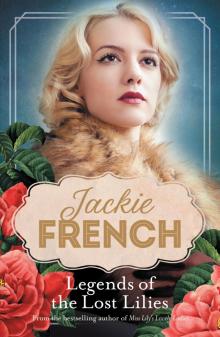 Legends of the Lost Lilies
Legends of the Lost Lilies Just a Girl
Just a Girl Pirate Boy of Sydney Town
Pirate Boy of Sydney Town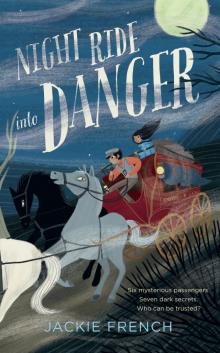 Night Ride into Danger
Night Ride into Danger The Secret of the Youngest Rebel
The Secret of the Youngest Rebel My Name is Not Peaseblossom
My Name is Not Peaseblossom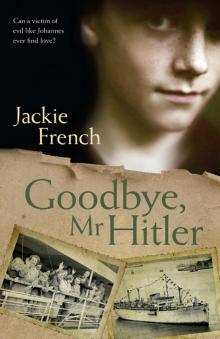 Goodbye, Mr Hitler
Goodbye, Mr Hitler Somewhere around the Corner
Somewhere around the Corner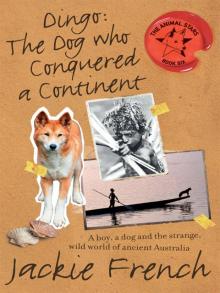 Dingo: The Dog Who Conquered a Continent
Dingo: The Dog Who Conquered a Continent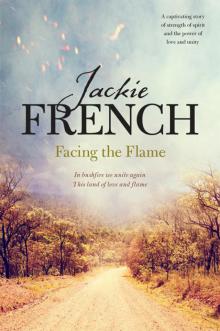 Facing the Flame
Facing the Flame Dark Wind Blowing
Dark Wind Blowing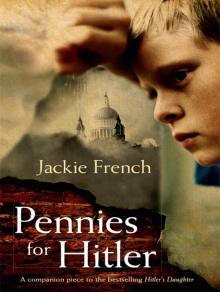 Pennies For Hitler
Pennies For Hitler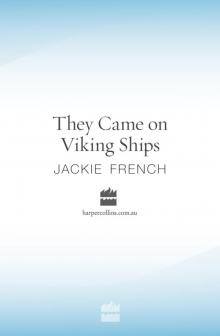 They Came On Viking Ships
They Came On Viking Ships To Love a Sunburnt Country
To Love a Sunburnt Country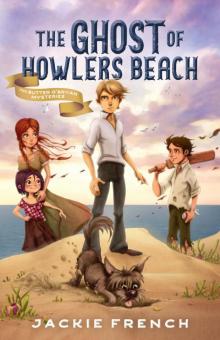 The Ghost of Howlers Beach
The Ghost of Howlers Beach The Girl from Snowy River
The Girl from Snowy River Phredde and the Purple Pyramid
Phredde and the Purple Pyramid The Secret of the Black Bushranger
The Secret of the Black Bushranger I Am Juliet
I Am Juliet Barney and the Secret of the French Spies
Barney and the Secret of the French Spies Miss Lily’s Lovely Ladies
Miss Lily’s Lovely Ladies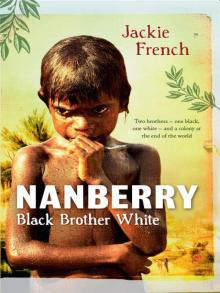 Nanberry
Nanberry A Waltz for Matilda
A Waltz for Matilda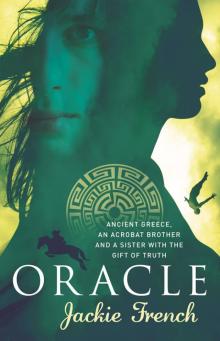 Oracle
Oracle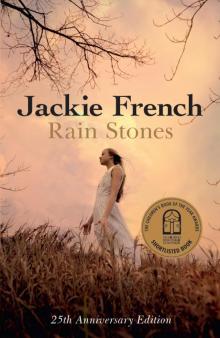 Rain Stones 25th Anniversary Edition
Rain Stones 25th Anniversary Edition Let the Land Speak
Let the Land Speak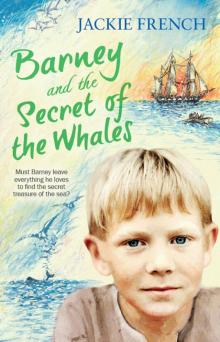 Barney and the Secret of the Whales
Barney and the Secret of the Whales The Phredde Collection
The Phredde Collection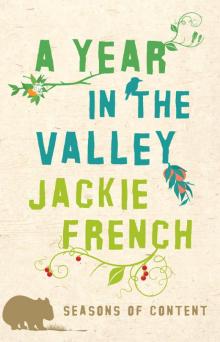 Year in the Valley
Year in the Valley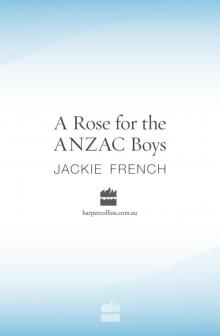 A Rose for the Anzac Boys
A Rose for the Anzac Boys The Ghost by the Billabong
The Ghost by the Billabong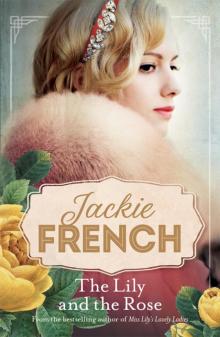 The Lily and the Rose
The Lily and the Rose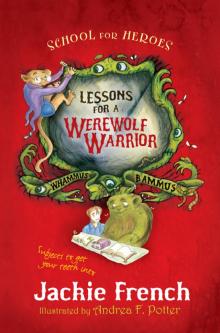 Lessons for a Werewolf Warrior
Lessons for a Werewolf Warrior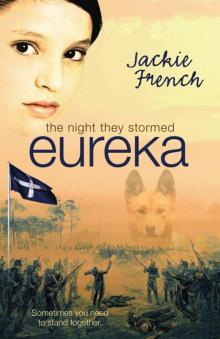 The Night They Stormed Eureka
The Night They Stormed Eureka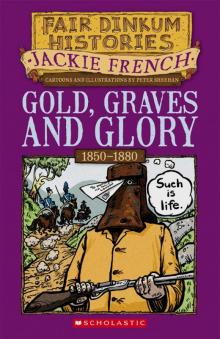 Gold graves and glory
Gold graves and glory If Blood Should Stain the Wattle
If Blood Should Stain the Wattle The Book of Horses and Unicorns
The Book of Horses and Unicorns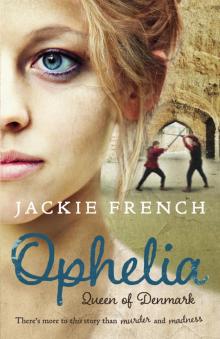 Ophelia
Ophelia Walking the Boundaries
Walking the Boundaries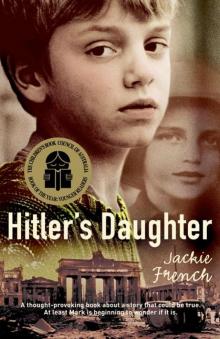 Hitler's Daughter
Hitler's Daughter Missing You, Love Sara
Missing You, Love Sara Macbeth and Son
Macbeth and Son Wonderfully Wacky Families
Wonderfully Wacky Families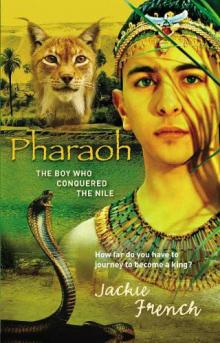 Pharaoh
Pharaoh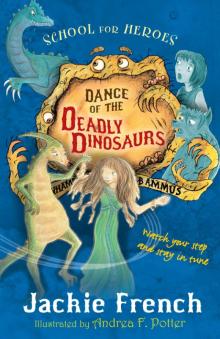 Dance of the Deadly Dinosaurs
Dance of the Deadly Dinosaurs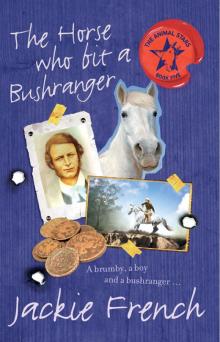 The Horse Who Bit a Bushranger
The Horse Who Bit a Bushranger One Big Wacky Family
One Big Wacky Family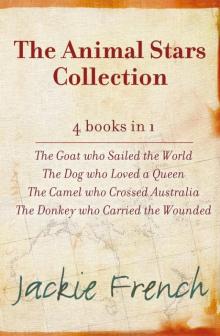 The Animal Stars Collection
The Animal Stars Collection Refuge
Refuge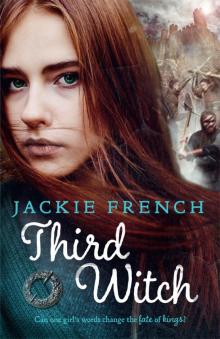 Third Witch
Third Witch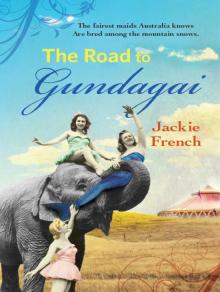 Down the Road to Gundagai
Down the Road to Gundagai